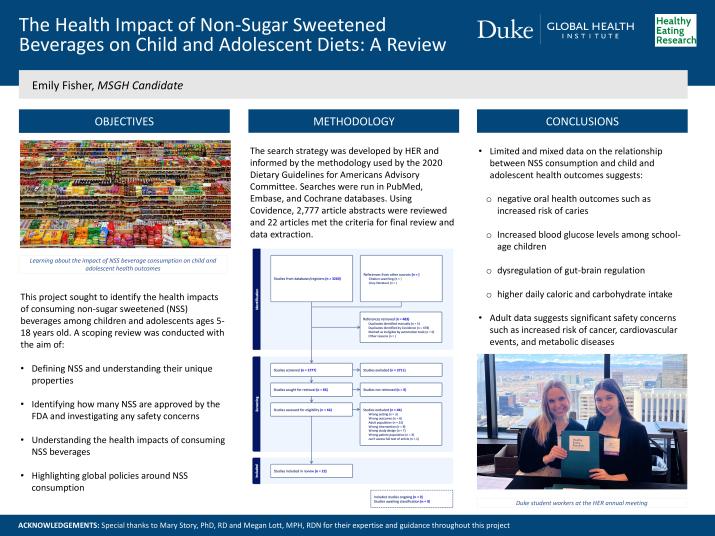The Health Impact of Non-Sugar Sweetened Beverages on Child and Adolescent Diets: A Review

The Health Impact of Non-Sugar Sweetened Beverages on Child and Adolescent Diets: A Review
Project overview
Healthy Eating Research (HER) exists to improve children’s nutrition through rigorous research on the socioeconomic factors, policies, and systems that lead to optimal weight status and favorable diet quality. For this particular project, HER convened an expert panel of organizational representatives from the Academy of Nutrition and Dietetics (AND), American Academy of Pediatrics (AAP), American Academy of Pediatric Dentistry (AAPD), and American Heart Association (AHA). Additionally, a scientific advisory committee (SAC) was convened, made up of content experts on children’s nutrition and, specifically, beverages. The panels met throughout the summer to review existing nutrition policies, provide evidence-based recommendations, and identify guideline inconsistencies for beverage consumption among children and adolescents between the ages of 5–18 years old. This project takes the form of a narrative review, focusing on the data found on the health impact of non-sugar sweeteners (NSS). Though at first marketed as a healthier alternative to sugar and a strategic weight management tool, NSS have come under recent scrutiny as the literature suggests mixed health impacts of human consumption. For children and adolescents in critical developmental periods, understanding the nutritional impact of such additives is essential to lifelong health. While the FDA has approved several NSS for consumption, the WHO has more recently put out a conditional warning on consumption of sugar alternatives, advising the population to avoid diet sweeteners. This opens the door for future policy targeting the marketing and availability of NSS as well as public health educational campaigns designed to address consumer behavior trends.
Last updated on October 1, 2024
